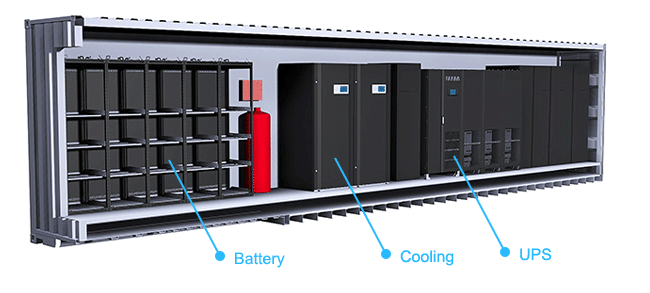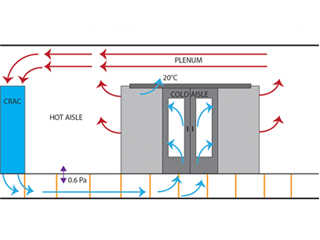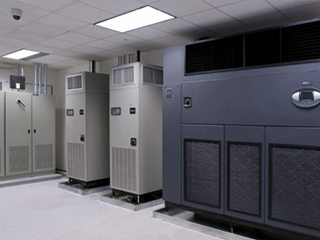Cloud computing and data storage has exploded. This growth saw large-scale and high-density data centers. Data centers have been continuously catering to the growing demand. As such, more extensive infrastructure has come into fruition to address the demand boom.
Despite the growing business requirements, performing at a premium level is a challenge to a data center operation. Balancing the capacity alone will require data centers to invest in a more sophisticated modality to upgrade.
Many organizations tend to look for a more cost-efficient way to negate additional costs without compromising IT capacity. The risk involved in data center operations goes beyond the current IT requirements. Because of the steady advancement in data computing, alternative routes are deemed viable to sustain an organization’s data center.
Prefabricated Data Center Solutions
The idea of prefabricated data centers has gone mainstream to answer the call for fast deployment and high-efficiency data operations. The main objective of such a modality is to integrate the whole data center infrastructure into prefabricated modules. The main infrastructures installed in a setup are:
- power
- cooling system
- fire suppression systems
- cabling
- management systems
A prefabricated data center has different versions. It may come in the form of:
- Integrated Data Center
- Container Data Center
- Modular Data Center
Containerized Data Center Background
True to its name, a containerized data center comes equipped with all the IT systems housed in a container. The container itself is fabricated in a manufacturing facility. Depending on data center needs, a containerized data center comes in different ranges. It may come as an IT container or a more comprehensive all-in-one system complete with physical IT infrastructure.
Advantages of Data Centers in a Container

Photo Credit: cbinsights.com
Like any other data center system, a containerized data center has its advantage. Ultimately, an organization’s requirement is the primary indicator in deciding to utilize such a system.
-
Flexibility
Because it is modular, a containerized data center is easy to install and scale-up. The modular configuration is quick to assemble when additional capacity is needed.
Conventional data centers are limited in their capacity without major upgrades. With the continuous trend of higher density data centers, a modular system can fit the bill. It does not require high, upfront capitalization. The cost will be dependent on the need for increased capacity, which will be in increments over time.
-
Standard-Based Solutions
Regular checks and tracking are feasible to maintain parameter reliability. Ultimately, standards are easier to achieve even in a fast-paced operation. Each module behaves in a predictable way, the same as the other modules, making management much easier.
-
Easy Retrofitting
Datacenter dynamics are ever-changing. Due to the sudden IT requirement demands, reconfiguration is inevitable. While proper planning is a must, unforeseen scenarios are a hurdle in the IT world.
Retrofitting is the basic process in data centers to update infrastructures. In a modular environment, IT equipment can be tested before the actual container setup. IT components come calibrated and tested to minimize any operational downtime.
-
Transportable
Organizations nowadays are flexible. They would require data centers to collocate depending on operational needs. Whether it be colocation or expansion, remote operation is a determining factor in data center capacities.
User population will generally dictate the location of a data center. But this variable is prone to change. This is especially present for site-specific IT operations. Transporting the data center closer to users is a valuable asset that only a modular solution can maximize.
Deployment Considerations
Of course, there are prerequisites before buying into the benefits of a containerized data center solution. Certain conditions are built to maximize the gains from this type of data center.
-
Software
If your operation does not require complex controls and monitoring then deploying a full DCIM solution may not exploit its advantages. AKCPro Server is a suitable alternative that provides a low cost entry to DCIM monitoring for small or modular data centers.
-
Vendor Selection
There are several manufacturers of containerized / modular data centers in the market. Choosing the right supplier for you will ease the delivery and implementation. You may check with your existing vendors. They may have similar container data solutions that are readily available. This way, the relations are already established, and particular demands are easy to layout in the table.
-
Strategy Objective
Sometimes, you don’t even have to change an entire data center. Specific operational strategies are fitted to the containerized data center solutions. It is a matter of discerning your main objective in investing in such a solution.
Solution Challenges
Considering a containerized data center comes with hurdles also. Like any other data center system, connectivity is essential to the operation. Uninterruptible uptime is the principal objective for a data center administrator. Despite the many benefits, there are also installation challenges critical when choosing a containerized data center.
- IT Evaluation – The first mode of action in choosing the configuration of a data center is a comprehensive evaluation of your IT requirement. It is best to check on your IT supply needs thoroughly.Despite the cost-saving benefits of a containerized data center, it is not entirely upfront. These benefits will only be realized over time. So, qualifying the correct IT requirements to your data center will mitigate any of those risks in the long run. You wouldn’t want an unfit IT infra in a container data center to give you an extra headache.
- Location – A data center is fundamentally relying on cooling systems for optimum run time. This variable is vital in choosing the right location for your container. Despite its modular nature, it is always best to consider the prime location to prevent any operational failure in the process.
- Monitoring System – While flexibility is the most prominent edge for containerized data centers, it is also a primary precursor to the level of monitoring needs. The capacity to scale and upgrade will require further complementary monitoring solutions. The data center setup will take precedence over the kind of monitoring system needed.
Maximizing Containerized Data Center Through Monitoring
There is not much difference in the operating environment of containerized data centers to the brick-and-mortar versions. They still include IT infrastructures that consume power and emits heat. This is why data monitoring is still an integral part of data center dynamics, regardless of modality.
An intelligent solution for modular data centers can track IT cabinets and racks. The AKCP data center monitoring solutions have an array of capabilities to integrate seamless monitoring. When AKCP sensors are connected to sensorProbe+, it incorporates a complete monitoring yield such as:
- Thermal Mapping
- Differential Pressure
- Current and Power reading
- RFID Access Control
- Sensor Status Light
AKCP Wireless Sensor Technology
To attain a comprehensive monitoring outcome, AKCP wireless sensor technology provides a long-range monitoring capability. Despite long-range dynamics, the wireless sensors have high penetration, power requirements suited to a containerized data center, even in remote locations.
These wireless sensors are also capable of message acknowledgment, instant threshold broadcasting, and lower bandwidth utilization.
AKCP Central Monitoring Software
Through a centralized data center software like AKCPro Server, all sensors deployed are monitored. It is capable of the following monitoring documentation:
- Drill down mapping
- Reports
- Alerts
- Graphing
- Video syncs
- Sensor events
- Access control administration
- Asset tracking
- Cabinet rack maps
Monitoring these indicators in a data center is essential. It only ensures that standards are maintained. Following such measures will not only mean regulatory compliance. It is also a significant achievement to keep lesser downtime and longer life span of your IT equipment.
Infrastructures are Just as Critical
While the whole data center structure like the one offered by a container is vital, completing the infrastructure inside gives it more edge. The container will only serve as a backbone. Fundamentally physical support to a series of IT systems.
The integrated power supply, cooling system, and support mechanics have inevitable functions to the whole data center ecosystem. All of these are interconnected that only proper planning can fully realize their optimum running potential.
The modular approach brought by containerized data centers is promising. But while we aim to upgrade our data center capabilities through such solutions, careful planning is still an integral ingredient to operational success. Only then can we ensure that our data center running at an optimum rate.
Reference Links:
https://www.cisco.com/c/dam/en_us/solutions/industries/docs/gov/Containerized_Data_Centers_Solution_Overview.pdf
https://www.kstar.com/newinformation/17584.jhtml
https://www.cdw.com/content/cdw/en/articles/datacenter/how-containerization-can-have-a-big-impact-on-your-data-center.html
https://www.compu-dynamics.com/pros-and-cons-containerized-data-centers/




